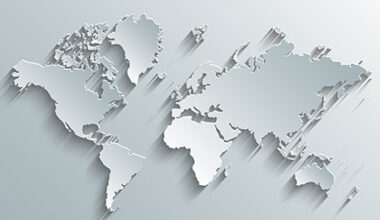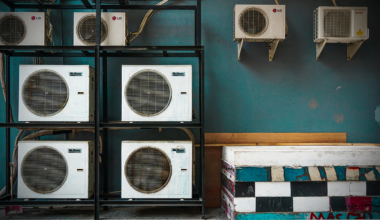The issue of PFAS chemicals, used for decades in many consumer products, has gained more and more attention among the public, media and policymakers. These toxic chemicals are in our water, environment, and even bodies.
Despite the urgency of the issue, there’s a shortage of information regarding which companies are the biggest producers of PFAS, how big the industry is and the societal cost of PFAS pollution.
Through investigative efforts, the NGO ChemSec now reveals that the corporate profits from the production are surprisingly small – especially compared to the societal costs. And even though the magnitude of the PFAS problem is severe, only a dozen companies are responsible for most PFAS production worldwide.
Read the report and op-ed
Key findings from ChemSec’s investigation:
- Twelve chemical companies are responsible for the majority of the global PFAS production: AGC, Arkema, Chemours, Daikin, 3M, Solvay, Dongyue, Archroma, Merck, Bayer, BASF and Honeywell.
- The global societal costs – remediation, health care etc. – of PFAS chemicals amount to €16 trillion per year.
- The average market price of PFAS is €19 per kilogram. However, if the societal costs were included, the accurate price would be €18 734 per kilogram.
Don’t get left behind
Subscribe to our newsletter.
In 2022, the global market size for PFAS was just over $28 billion, with estimated profits of around $4 billion[1]. You would be excused to think the profits would be much greater, given the significant problems caused by PFAS. But instead, the profits pale compared to the societal costs of these chemicals.
By combining a range of studies and expert statements relating to costs connected to healthcare from exposure to PFAS and remediation of soils and water, ChemSec can reveal that the global societal costs are €16 trillion per year.
It goes without saying that the revenue and profits of PFAS are not even in the same range as the societal costs of these chemicals. Moreover, €16 trillion is a conservative estimate, excluding costs such as damages to animals or reduction of property prices.
“PFAS chemicals pose a serious threat to our health and the environment. It’s crucial that we tackle this issue not only on a policy level but also on a business level. We need transparency and accountability from companies involved in PFAS production, and we need policy measures to reduce the use of these harmful chemicals”, says Anne-Sofie Bäckar, Executive Director at ChemSec.
PFAS chemicals’ role in society is overestimated
If PFAS producers were to pay for the pollution they caused, many would go bankrupt. However, this considerable liability risk is rarely reflected in the sustainability reports of these companies.
ChemSec’s investigation of the twelve biggest PFAS producers shows that “PFAS” is rarely mentioned. In fact, seven out of twelve companies do not mention it all. Yet another three mention PFAS less than ten times. The two exceptions are 3M and Chemours, which both are involved in litigation cases due to PFAS production and are therefore required to mention this in their reporting.
As a telling contrast to the lack of mentions of PFAS, the word sustainability is collectively mentioned 1,913 times by the companies in the reports.
A central argument for keeping PFAS on the market is that these chemicals are essential in many areas, such as medicine and climate change mitigation.
There is, however, a tendency to overestimate the role of PFAS as essential. For example, looking at the fluoropolymer market in the EU, a sub-category to PFAS where you find a majority of essential uses, only about 8 per cent of the total production volume goes towards the often-cited examples of renewable energy, semiconductors and pharmaceuticals (which, by the way, is exempted from the EU ban proposal). The rest goes towards transportation, textiles, electronics and cookware where there are, in most cases, viable alternatives.
[1] Assuming a 16% profit margin, as communicated by American PFAS producer 3M, is a relevant industry benchmark.







